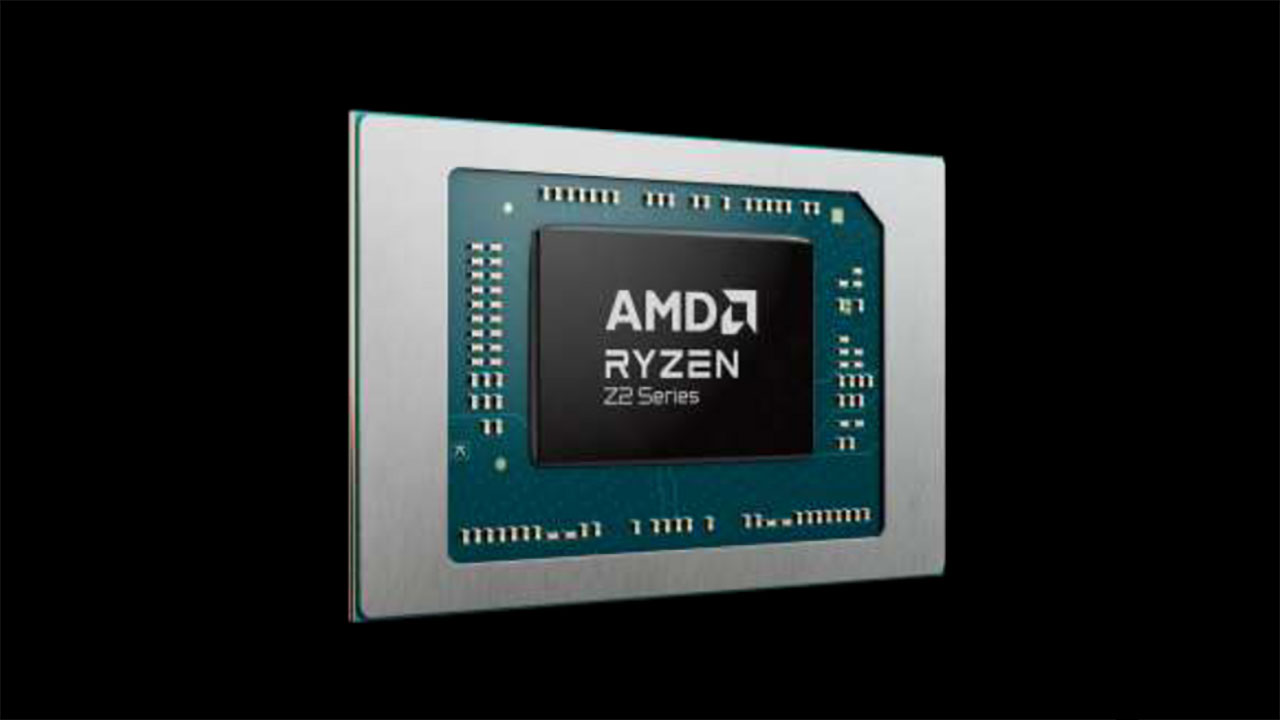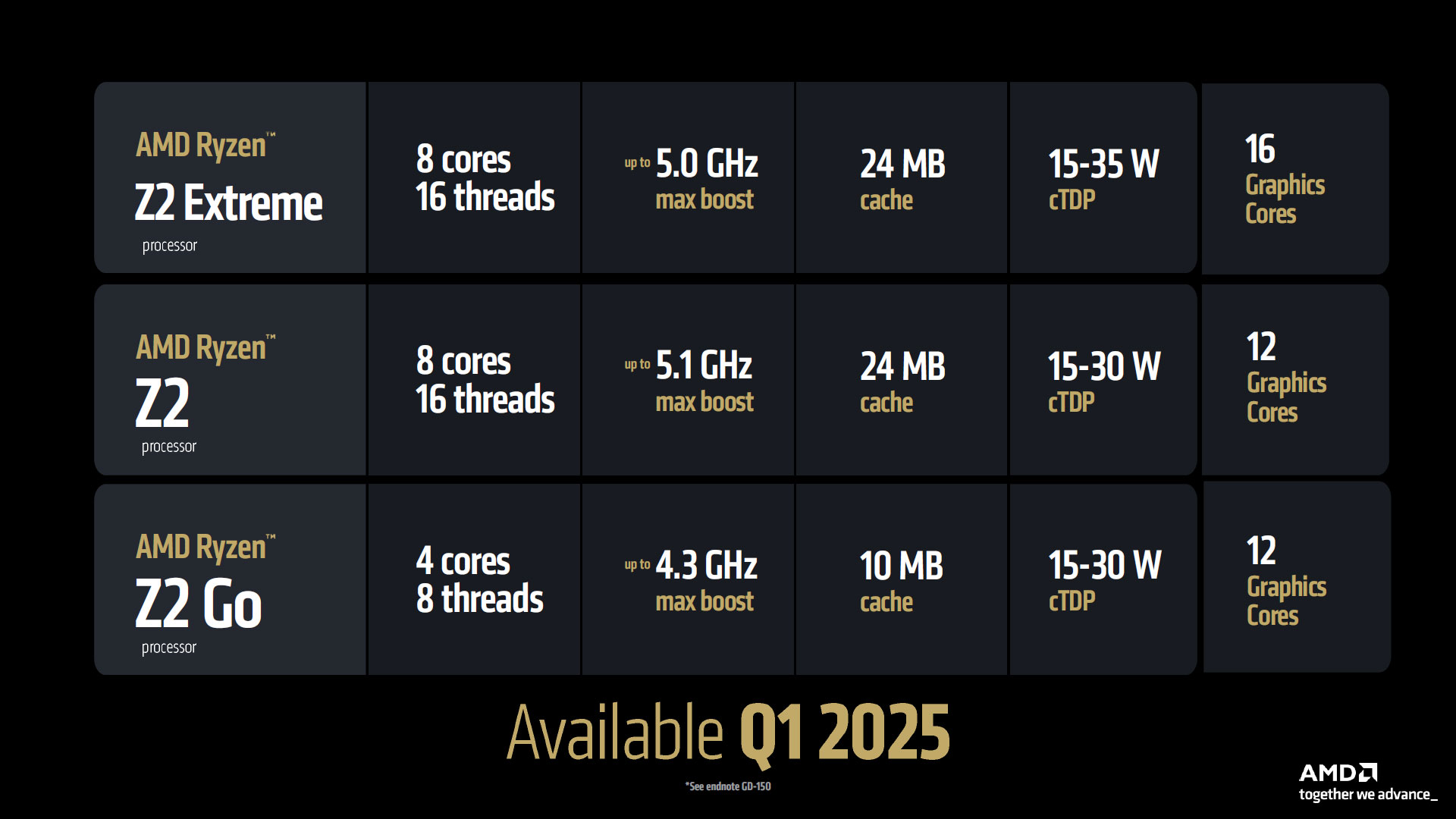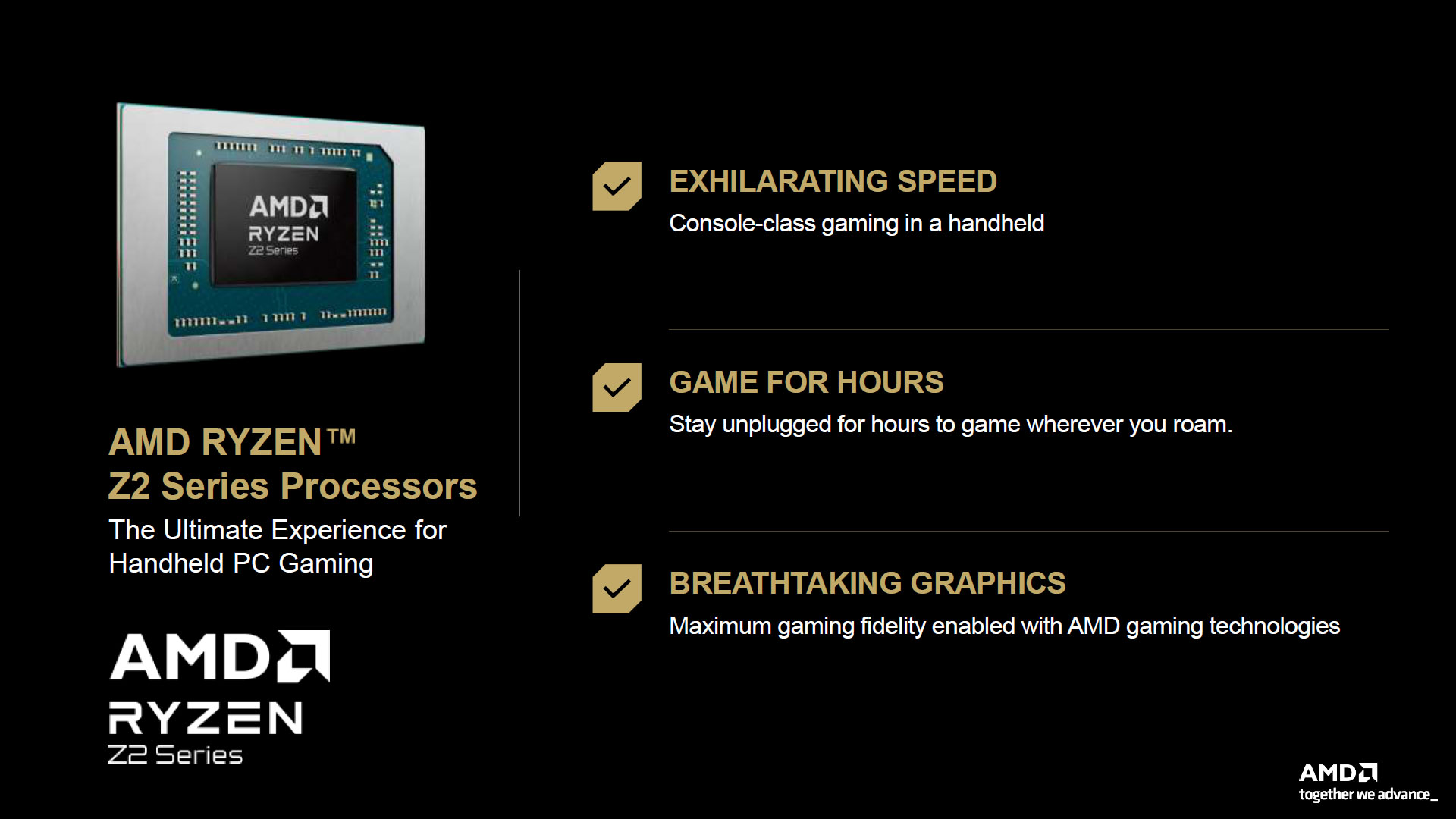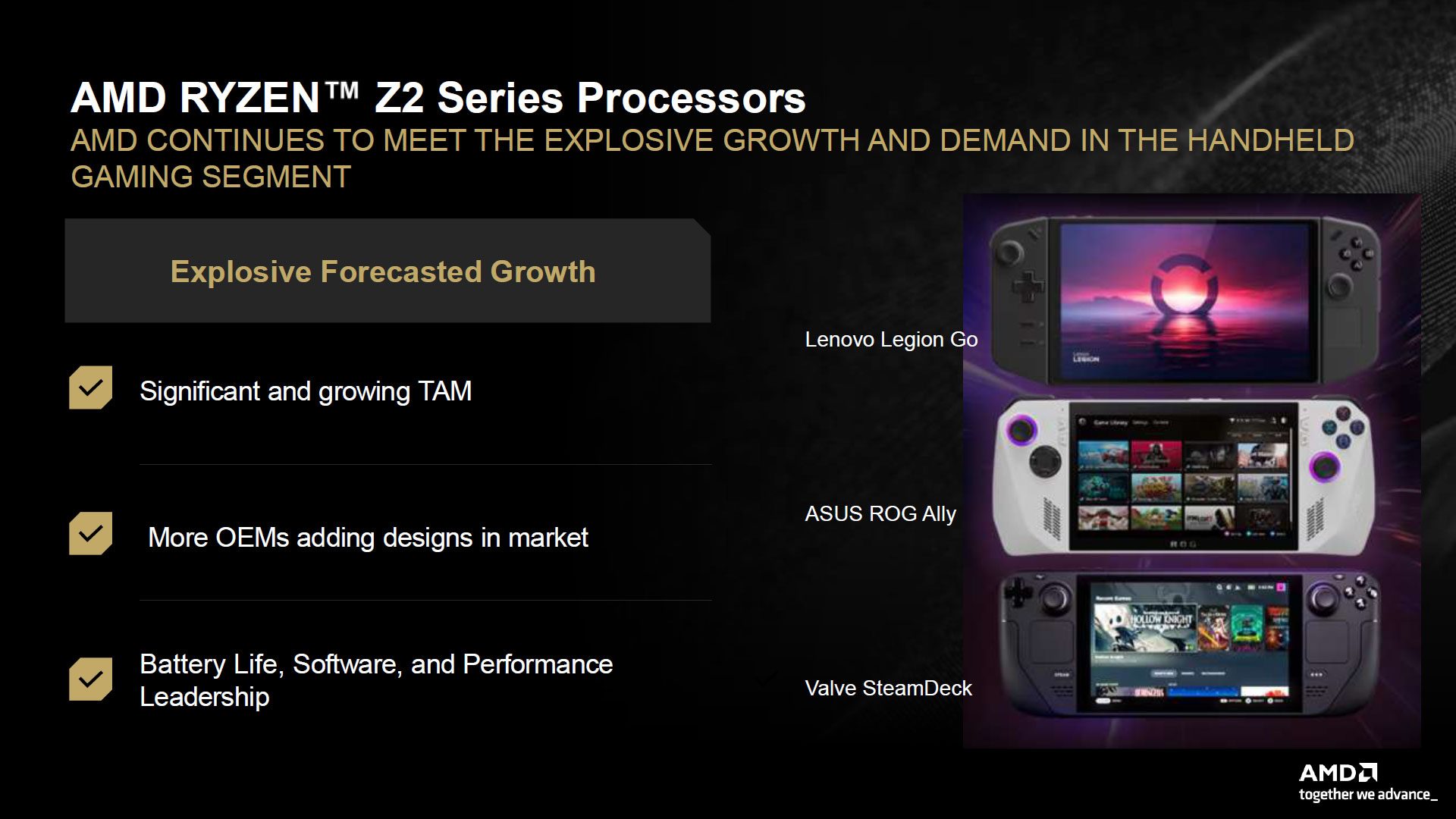AMD announces Ryzen Z2 series processors for handhelds — more performance, better efficiency, coming soon

AMD announced the new Ryzen Z2 series of processors today at CES 2025, mostly ticking the boxes for what we already expected to see. The parts will launch during Q1 2025, with three models available. All come with a configurable TDP range starting at 15W and extending up to 30W for the lower-tier parts and 35W for the new Z2 Extreme.
Details on the new processors are relatively thin. While they superficially appear to be Z2 variants of the existing Strix Point lineup, they’ve been tweaked to customize the designs and improve power efficiency. AMD saw plenty of uptake from the gaming handheld market with its Z1 processors that launched in 2023, with devices like the Asus ROG Ally and Lenovo Legion Go following in the path blazed by the original Steam Deck. The new Z2 line will, naturally, aim to improve performance and battery life.



Starting at the top, the Ryzen Z2 Extreme will have an 8-core/16-thread CPU, 5.0 GHz maximum boost clock, 24MB of cache, 15-35 watt cTDP, and 16 RDNA 3.5 graphics cores. It will use three Zen 5 cores and five Zen 5c cores, with a base frequency of 2.0 GHz. None of the new Z2 processors will have Ryzen AI support, meaning there’s no NPU present.
The AMD Ryzen Z2 also has an 8-core/16-thread CPU design, with a 3.3 GHz base clock and a 5.1 GHz boost clock. All of the CPU cores are the same, but AMD doesn’t indicate whether they’re Zen 5, Zen 5c, or something else. We suspect they’re all Zen 4 cores, and we’ll update this as soon as we can get any sort of confirmation. The GPU is a 12 CU design leveraging the RDNA 3 architecture, so this appears to be a rebranding of the existing Z1 Extreme. It has 24MB of cache with a 15–30 watt cTDP.
Finally, the Ryzen Z2 Go comes with a 4-core/8-thread CPU design, again with no indication of what architecture generation it’s using. This one leverages older-generation CPU and GPU designs, and we don’t expect it to offer anything new relative to the existing Z1 Extreme. It does have a 12 CU RDNA 2 GPU, and the combination of an older GPU with fewer CPU cores could make for a decent budget solution. It has 10MB of cache and a 15–30 watt cTDP.
We’ll likely see preview hardware from various handheld manufacturers at CES 2025 using the new Z2 chips, with retail availability likely starting either later this quarter or in Q2 2025.
Get Tom's Hardware's best news and in-depth reviews, straight to your inbox.

Jarred Walton is a senior editor at Tom's Hardware focusing on everything GPU. He has been working as a tech journalist since 2004, writing for AnandTech, Maximum PC, and PC Gamer. From the first S3 Virge '3D decelerators' to today's GPUs, Jarred keeps up with all the latest graphics trends and is the one to ask about game performance.
-
thestryker So it looks like we have a cut down HX 370, rebranded Z1E and a 6800H with half the CPU disabled. The minimum wattage of 15W is also somewhat unfortunate because that's been one of the really cool parts of the Steam Deck with the 9W minimum.Reply
I'll be curious to see if the Z2Go is faster in gaming than the Z1, and if it is then it totally makes sense.
Hopefully AMD will have worked on the power profiles for these parts. The biggest annoyance that I've had with the Z1E is that its default profile is still focused the same as the laptop equivalent and emphasizes CPU over GPU. Having to use third party software to fix this is less than ideal.
Will be looking forward to LNL vs Z2E in handheld form, and hopefully we'll see some comparisons this quarter. -
usertests Reply
It should be. 12 CUs RDNA2 vs. 4 CUs RDNA3. It loses CPU performance but Steam Deck already proves quad-core Zen 2 can work in a handheld with a low 720p30 target.thestryker said:I'll be curious to see if the Z2Go is faster in gaming than the Z1, and if it is then it totally makes sense.
The really interesting comparison will be between the Lenovo Legion Go S and Steam Deck on all fronts: performance, battery life, ergonomics, price. Everything but the OS apparently, since both should be running SteamOS.